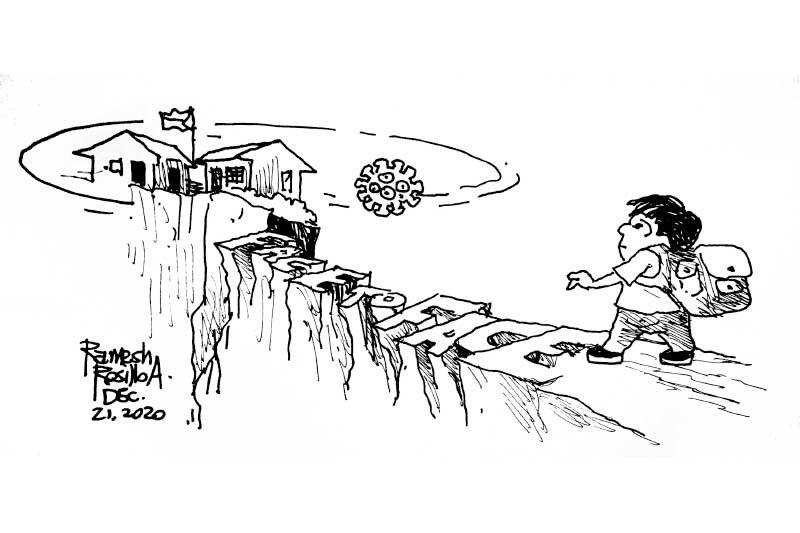EDITORIAL - The risks of face-to-face classes

The proposal to have face-to-face classes for students in areas with low COVID-19 risks is again being pushed.
Those who insist on such a dangerous experiment base their reasoning on studies that show that schools are not COVID-19 hotspots and that children under the age of 14 are generally not susceptible to the coronavirus.
Apart from those mentioned above, the reasons for having face-to-face classes again are actually sound. Children are not learning as much from modules. In fact many suspect that the children aren’t answering the modules themselves, but that their parents, guardians or other adults are doing it for them. The modules themselves are a separate issue since they require so much when it comes to resources and effort to produce. Then they are discarded.
On the other hand, online learning isn’t also all it was touted to be. Until now there are still problems like slow internet connection, or students willfully disconnecting from online classes anytime they want. Those who have stable connection or the right gadgets aren’t always assured that the impersonal nature of this learning process will work.
So yes, it stands to reason that face-to-face learning is still the best method to teach our students. But the question is, is it the right time to return to this method?
We are still in the middle of a pandemic; people are still getting infected and dying. Certain rules have to be followed, and children may not realize the urgency of sticking to those rules.
Again, we highlight the carefree and inquisitive nature of children. They will want to hang out in groups, physically interact with others, play and get dirty as children often do. Especially children who have been kept indoors or at home for the better part of the year
Yes, there will be adults to supervise them, but we know they won’t always be around all of the children all the time.
Besides, opening face-to-face classes in certain areas doesn’t just mean it’s only the students who get to back to normal activities. That also means allowing their parents and guardians to be able take them to school and fetch them after. That means school staff will be needed. That means a lot of drivers, vendors, barangay tanods, and other people who support a school or school operations have to be active again.
In short, you cannot allow a school to resume face-to-face classes again without somehow activating the immediate community or communities around it.
And it’s when a community resumes normal activities during this time that the number of infections again rise.
- Latest




















